Chevy hopes for ‘super’ from 2012 Sonic
By John Gilbert
The 2012 Chevrolet Sonic was introduced just in time for the SEMA electronics extravaganza in early November, 2011, in Las Vegas, which barely gave  Chevrolet time to come out with a specialty model called the “Sonic Boom†for the SEMA show. We can only imagine how long it will take until Chevy PR wizards come up with a “Super Sonic.â€
The normal, garden-variety Sonic is stuck with designations such as LS, LT, and LTZ, but it is intriguing, with sporty looks in either hatchback or sedan designs, and it is sprightly, bordering on sporty, in its performance — at least with the turbocharged choice of engines. It’s important to appreciate the basic Sonic, on its own, of course, and living for a week with the high-end LTZ version, with its turbocharged engine and 6-speed manual transmission, is a good way to study the car.
The Sonic is of vital importance to Chevrolet as it leads General Motors back from the shadows of bankruptcy, and it jumps into the highly competitive subcompact segment, where a herd of vehicles — from the Ford Fiesta to the Honda Fit, Nissan Versa, Mazda2, Toyota Yaris, a couple of Scion models, and the pair of Korean trend-setters , the Hyundai Accent and Kia Rio.
That’s an imposing group to try to invade, with all or most of them offering the latest technology, good performance, high gas mileage, and low basic price. And nobody has heard any of those manufacturers say anything other than that their cars offer the interior amenities of a much more expensive car, because the buyers stampeding to the subcompact segment don’t want a stripped-down econobox any more; they want a small, economical car with a lot of creature features.
Korea is one of the key players in the subcompact surge, because it has made enormous strides in the last decade, but the Hyundai-Kia partnership really caught fire in just the last couple of years. There used to be a half-dozen Korean car companies 20 years ago, in the youthful days of that country’s brief auto history, but one by one they fell by the economic wayside, while Hyundai flourished. Daewoo was among the casualties, and Kia was headed that direction, but as Hyundai took over Kia, General Motors bought out Daewoo, so both remained viable. The new, slick-designed Kia models get to share the high-tech Hyundai drivetrains. And if you bought a Chevrolet Aveo in the last couple of years, you were buying the latest installment of a Daewoo.
The Sonic, then, is the new-for-2012 descendent of the Aveo, but it is much more than that. A Chevrolet official told me that the some of the engineering ideas came from Europe (think Opel), and some of the design came from Asia, while the car itself is assembled in the U.S., at the Lake Orion, Michigan, assembly plant. Its sticker says that U.S./Canadian parts make up 47 percent of Sonic’s content, while Korea offers 20 percent as the major source of foreign parts. Makes you wonder about the remaining 33 percent, but it obviously comes from Europe, or possibly from biodegradable Aveos. At any rate, Chevrolet is justified in calling it a “global†car.
The basic cheapness and uncoordinated feel that plagued the Aveo is nowhere evident in the Sonic. Chevrolet PR claims that it is the only subcompact made in America, which is impressive, even if it sounds odd coming a couple paragraphs after the boasts of it being such a global car. It will be sold all around the world, and its transmission is built in Austria, but it’s good to see GM choosing a U.S. plant as its base.
The engines are built in the U.S., and the Sonic gets its push from the same engines that power the Cruze, Chevy’s highly successful car one step larger, in the compact class. The Cruze is selling very well, even if almost one-third of them are being sold to fleets, and its power is best described as adequate with the 1.8-liter 4-cylinder, or the smaller but turbocharged 1.4-liter 4. The 1.4, without the turbo, is the gas engine used in the plug-in electric Volt, as well.
In the smaller and lighter (2,721 pounds for the sedan, 2,684 for the 5-door hatchback) Sonic, the 1.8 ranges on the high side of displacement, and puts out 138 horsepower and 125 foot-pounds of torque. The smaller 1.4, with its fuel-air mix thrust into it by turbocharging, delivers 138 horsepower and 148 foot-pounds of torque. If it seems odd to offer two engines with identical horsepower, it won’t seem so odd after you drive them both. Read more
2012 Beetle adds athletic style to ‘cute’
By John Gilbert
Model renovations occur every four or five years throughout the auto industry, but not at Volkswagen. When the German company says its 2012 Beetle is “all-new,†don’t dismiss it as routine — it is only the second renovation in the car’s 74-year lifetime.
The first VW was produced in 1938, and was called “Volkswagen,†or the “people’s car.†By 1949, it was brought into the U.S., where people were charmed by the novelty of such a small and economic car, with its rounded-roofline, which resembled a beetle, so they started calling it the “Beetle,†with “Bug†as its nickname. Just as well, because the expanding company itself by then was known as Volkswagen. The Beetle’s familiar shape continued south of the border, until 2003, when the last one was produced in its Mexican plant.
Meanwhile, in 1998, Volkswagen decided to resurrect its icon, replacing the rear-drive car with a larger, retro-modern front-wheel-drive second generation. It was called the “New Beetle,†to recall its predecessor but also put distance between the two.
Together, Beetles and New Beetles sold over 21.5-million worldwide, with over half of annual sales in the U.S. Owners all agreed they were steady, dependable, economical, user-friendly, and charmingly cute. But the word performance was never be used to describe those Beetles.
It doesn’t take long behind the wheel of the 2012 Beetle to realize the assessment must change from “cute little car†to “cute little car; goes like hell.â€
It’s not a street racer, but its quick responses are closer to a sports coupe than a car with such familiar charm.
The new generation car sheds the “New†and again is called “Beetle,†and it rides on a new platform with a wider and lower stance and firmer suspension. It is stretched 6 inches, to 168.4 inches, on a 99.9-inch wheelbase; it is 71.2 inches wide, 3.3-inches more; and it stands 58.5 inches tall, a half-inch lower than the New Beetle.
Its updated engines include the surprisingly strong 2.5-liter 5-cylinder, and the hot, 200-horsepower 2.0-liter 4-cylinder turbo — of Golf and GTI prominence.
It’s not GTI-hot, but it performs with enough spirit to give you pleasure whenever you drive it, and an extra kick whenever you find the need to push it a little. Or a lot. I enjoyed the feel of the bright red test vehicle, but I hadn’t pushed it hard, until one night when I was driving through Minneapolis on Interstate 94 at about 11 p.m. A rude and aggressive driver in a large Tahoe SUV had come up behind a row of cars in the left lane, closing to within 10 feet of each and flashing its lights urgently, virtually forcing them to pull over.
I moved into the far right lane because I was nearing the exit onto westbound 394, satisfied that I had gotten clear of that bozo in the process. The serpentine-like exit ramp bends gently up and to the right, then makes a hard, sweeping left, before a more gradual right blends into 394. I caught a glimpse of the big SUV, speeding up the left, then veering into the middle lane. I wanted no part of being cut off or run off the road, so I gave the Beetle a dose of gas and accelerated. As if on cue, the Tahoe cut in behind me, surging right up onto my tailpipes as we started up the exit. Annoyed, and seeking refuge, I downshifted and hammered the gas pedal. The Beetle surprised me, zipping up the ramp to the right, and staying flat enough that I could keep accelerating around the hard left curve. It held its flat attitude as I powered through the esses, and when I glanced in the rear-view mirror, there was no Tahoe for several seconds.
Finally, its headlights appeared, a half-block back. About a mile later, I was cruising at the speed limit in the right lane when the Tahoe roared past in the left lane, going about 75 or 80. Last call, or Big Mama’s curfew, must have been urgently calling, but I got a chuckle at the incongruity of that big, V8-powered SUV being unable to stay with the cute, little Beetle around a series of curves. Read more
Kia Rio scrambles 2012 subcompact list
By John Gilbert
The Kia Rio evolved up through the 2011 model year into a pretty decent subcompact car, with its low initial price, 10-year, 100,000-mile warranty, and rank of “not bad†for styling, roominess, economy, and performance.
That was “then,†as of 2011’s rapidly ending model year, and this is “now,†the future, as of the introduction of the 2012 Rio, which reinforces the low-price/long-warranty tradition but vaults beyond that to the upper echelon of subcompacts. It raises the rank from “not bad†to “outstanding†for performance and economy, roominess, solid safety construction, advanced technology, and dramatic looks. Styling, admittedly, is in the eye of the beholder, but you soon notice that virtually all of the beholders have their eyes on the Rio.
“Consumers initially buy with their eyes,†said Ralph Tjoa, national manager of Kia’s product planning. “We’ve changed just about everything — the engine, transmission and platform — and improved its fuel economy, value and safety. It’s no longer a penalty box; now it’s a box suite.â€
Kia’s rise from back lot to suite-level has escalated dramatically in the last two years, as it finds ways to slip out of the shadow of Hyundai, its corporate parent and partner, and by far the leading auto manufacturer in Korea. Kia might have became the latest “former†Korean automaker, had Hyundai not taken over to streamline it manufacturing, drivetrains, platforms and technical advances. As Hyundai shot up to prominence, particularly with the introduction of the 2011 Sonata, Kia followed along dutifully, with quite similar vehicles in every category. Kia made a bold departure when it hired Peter Schreyer, a designer from Audi. His top achievement so far is the 2011 Kia Optima, which followed Hyundai’s sizzling and high-tech midsize Sonata and set its own styling standard.
Schreyer had nothing to do with the Soul, a boxy but popular subcompact with hamster-induced advertising success, but he did have a hand in the Sportage, a stylish crossover SUV based on the Hyundai Tucson. Hyundai struck marketplace gold with its new Elantra compact this year, while Kia already has its Forte. The subcompact segment was next, and Hyundai’s exceptional remake of the Accent is loaded with technical and performance advances, full of features and capable of 40-miles-per-gallon for $14,000.
Hyundai continues to stress technology aimed at economy, and Kia seeks to be sportier and more style oriented. Hyundai’s Elantra, Accent, and sporty coupe Veloster — based on the Elantra platform, with the slick new 1.6 Accent engine — are all candidates with considerable merit for the 2012 North American Car of the Year.
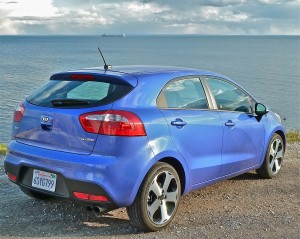
Out first as a sporty hatchback, a sleek Rio sedan will follow offering 40 mpg at prices from $13,000 and up.
Against that Hyundai hat trick from its partner/parent, Kia unveils the Rio — its uniquely styled version of the Accent. Hyundai executives might wonder if one of their trio might win Car of the Year, but the Kia Rio offers stiff competition from yet another Korean candidate.
The subcompact segment is expected to sell 400,000 vehicles for the 2011 model year, and Kia estimates it will double by 2015, because of continued U.S. determination to downsize to inexpensive and economical cars that also can have some flair. The segment has expanded with all new cars such as the Ford Fiesta, Chevrolet Sonic, Fiat 500, Mini Cooper, Honda Fit, Mazda2, Toyota Yaris and several Scion models, and Nissan Versa. Kia officials are determined to prove the Rio is prominent against such cars. Read more


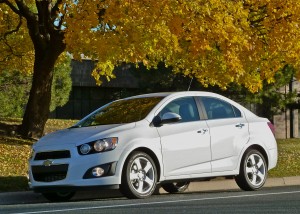

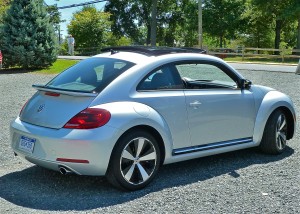
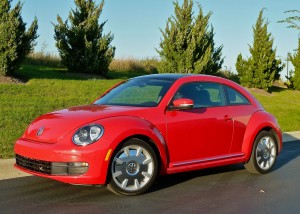
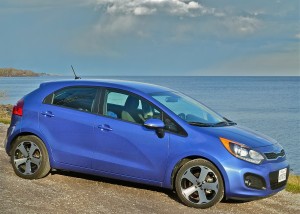
 John Gilbert is a lifetime Minnesotan and career journalist, specializing in cars and sports during and since spending 30 years at the Minneapolis Tribune, now the Star Tribune. More recently, he has continued translating the high-tech world of autos and sharing his passionate insights as a freelance writer/photographer/broadcaster. A member of the prestigious North American Car and Truck of the Year jury since 1993. John can be heard Monday-Friday from 9-11am on 610 KDAL(www.kdal610.com) on the "John Gilbert Show," and writes a column in the Duluth Reader.
John Gilbert is a lifetime Minnesotan and career journalist, specializing in cars and sports during and since spending 30 years at the Minneapolis Tribune, now the Star Tribune. More recently, he has continued translating the high-tech world of autos and sharing his passionate insights as a freelance writer/photographer/broadcaster. A member of the prestigious North American Car and Truck of the Year jury since 1993. John can be heard Monday-Friday from 9-11am on 610 KDAL(www.kdal610.com) on the "John Gilbert Show," and writes a column in the Duluth Reader.